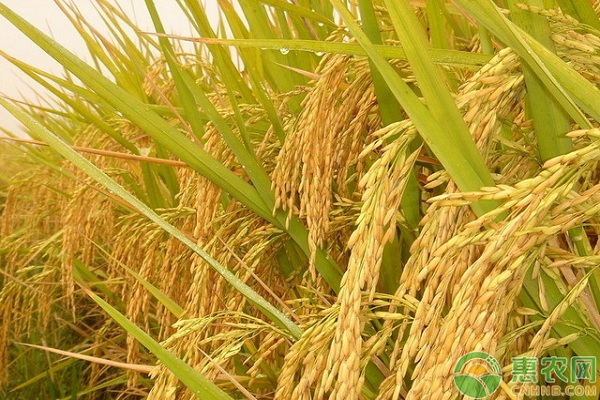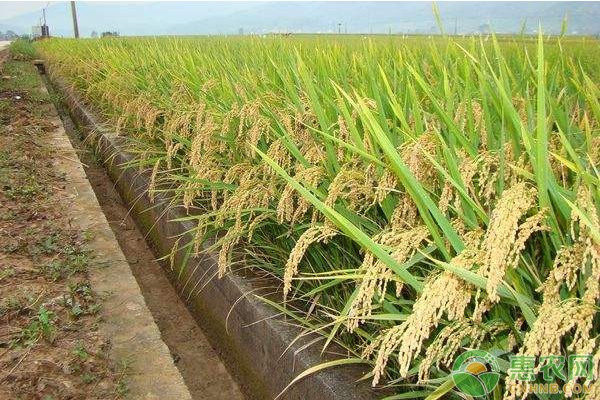Symbiotic green breeding technology between rice and crab
Farming crabs in paddy fields is an ecological and three-dimensional breeding model that can achieve high quality, high efficiency and green ecological production. During the growth process of rice, it can purify water quality and provide a good ecological environment for habitat and development of river crab growth. The fertility activities of crabs in rice fields can remove some weeds in rice fields, increase the fertility of rice fields, and ensure high quality and high yield of rice. Moreover, in the rice cultivation and management process, high-quality farmyard manure is used to limit the use time and variety of chemical fertilizers and pesticides, bio-pesticide is used to control pests and diseases, symbiotic green production conditions of rice and crab are created, and high-quality and high-efficiency green ecological agriculture is developed.

1 Field construction
1.1 Base selection
The paddy field for cultivating river crabs is preferably upstream of the irrigation water system or can be irrigated separately, free of irrigation and drainage, no pollution, convenient transportation, flat terrain, and the paddy soil is preferably clay and loam. Promote scale farming, the general unit area is 10~15 mu (667 square meters/mu, the same below), and the base area is above 100~150 mu.
1.2 Construction of the field
The rice field of the river crab is different from the ordinary rice field, and the crab field is easy to walk and the daily management of the river crab. Generally, the field is cultivated to a height of 50 to 70 cm, a top width of 50 to 60 cm, and a bottom width of 80 to 100 cm. The finished field should be practical and pay attention to daily maintenance.
1.3 Establish anti-floating facilities
After the rice transplanting, and before the crabs were stocked, an anti-evasion wall was established in the field. The anti-evasion wall is 50~60cm high and is slightly inclined inward. The anti-evasion wall material is made of anti-aging plastic film. The lower end of the plastic film is buried in the soil 15~20cm, close to the outside of the plastic film, and a 75cm bamboo pole is inserted every 80~100cm. As a pile, the plastic film is tied to the bamboo pile with a polyethylene rope. The inlet and outlet of the paddy field is the key to escape. It should be tied with double-layered sleeves and a small net of “Ecstasy†in the outlet to prevent the crab from escaping.
1.4 Excavation ring groove
The trench is excavated 60~70cm from the inside of the field. The width of the trench is about 60cm, the depth of the trench is about 50cm, and the slope ratio is 1:1.2. The ring groove is convenient for the river crab to avoid high temperature and shelling.
2 Rice cultivation
2.1 Choosing excellent varieties
The rice varieties with strong stress resistance, excellent rice quality and high yield and stability are selected, and the maturity of the varieties is suitable. The approved seed varieties must meet the national second-level seed standards.
2.2 Cultivating strong and strong
2.2.1 Soaking seeds and germination
Soak the seeds with 45% "901" wettable powder 500 times, soak seeds for 6-7 days at 15 °C water temperature, soak the accumulated temperature to 100 °C; germination at 30~32 °C, germination to seed whitening 1mm to be sown.

2.2.2 Sowing
Sowing seedlings from April 15 to 20. The seeding rate per square meter of dry seedlings is 150~200g, the seeding amount per square meter of isolation layer seedlings is 300~350g, the seeding amount of mechanical transplanting is 100~125g per plate, and the simple seedlings of seedlings are 3~4 grain.
2.2.3 Seedbed management
Seedbed management is a key link in nurturing strong growth. Closed chemical weeding after sowing; temperature management before high and low, Ning low not high, early 25~28 °C, medium 20~25 °C, late refining gradually approaching external temperature; humidity management see seedling watering, morning leaf tip When dewdrops, there is no need to water the water on the day, otherwise it will be watered; the rice leaves and one heart will be sprayed once and once to prevent the blight; 1~2 days before the transplanting, the seedlings will be sprayed with omethoate, and the seedlings will be taken to the ground to prevent seedling pests. At the same time, the farmer's fertilizer is applied.
2.3 Soil preparation and disinfection
It is recommended to turn over the ground in autumn and apply 1,500 to 2,000 kg of decomposed farmyard manure per mu. Before the transplanting, dry-rotating tillage is carried out, and 50-60 kg of slow-release or controlled-release rice special fertilizer is applied per mu, and no chlorine-based fertilizer is applied. After two days of squatting, 30 kg of quicklime per acre was sprayed and disinfected with water to achieve the purpose of clearing the wilderness.
2.4 Honda transplanting
May 25~30, Japanese rice transplanting, the wide and narrow row transplanting mode, wide line 40cm, narrow line 20cm, plant spacing 18~20cm. Manual insertion or mechanical insertion.
2.5 weeding
Before transplanting or 3~5 days after transplanting, select high-efficiency and low-toxic butylamine herbicide, mix 15~20kg of soil with 100~150mL per acre, and evenly spread the field to carry out closed weeding. After 20 days before the river crab is placed and the crabs are put into the field, no pesticides are used for weeding. If there are large weeds, they can be removed manually.
2.6 Prevention and treatment of diseases
Before and after rice heading, spray 5% of the bio-pesticide 5% of Jinggangmycin water 100g to water or 5kg of chunleimycin WP 60g to 5kg of water, and control rice blast and sheath blight at the same time. Rice false smut.
3 paddy field crab culture
3.1 Paddy field preparation
20 days before the river crabs enter the field, no pesticides are applied to the paddy fields. After the crabs are placed, no fertilizer is applied to the paddy fields, and 30 to 40 kg of quicklime per acre is used for disinfection, and rodents and snakes are removed. Check the anti-floating facilities, strengthen the anti-evasion wall, and check whether the inlet and outlet sleeves are tight.
3.2 Stocking time and density
In the first half of June, the crabs were placed in the paddy fields, and the crabs were weighed at a standard of 100 to 120 kg/kg, and 400 to 500 crabs were placed per acre.
3.3 Feeding management
3.3.1 Feeding of bait
The bait is fresh, the crabs like to eat, and the nutritional value is rich. Feeding once a day in the morning and evening, the amount of feeding during the day accounts for 30% of the total, and the amount of feeding in the evening accounts for 70%. Every morning, a patrol is conducted, and the amount of feeding is appropriately adjusted depending on the eating situation. In the early stage after the river crab is placed in the paddy field, the temperature is suitable and the light is sufficient. The animal feed should be fed more to promote the rapid growth of the river crab. In the middle stage of the crab growth, attention should be paid to the feeding of animal feed and plant feed; Feed animal feed or compound feed.
3.3.2 Water quality adjustment
The inlet and outlet of the paddy field are located on the diagonal of the paddy field. The water should be changed frequently. The water should be changed no less than 4 times a month. The water exchange capacity should be about half of the field water. The water level of the paddy field should be 15~20cm, not less than 10cm. When the water is changed, the temperature difference of the water does not exceed 3 °C. When changing the water, slowly fill the water, and do not interfere with the normal life of the crab.
3.3.3 Shelling management
Before each shelling, the crab should be fed with a feed containing chitin, which increases the feeding amount of animal feed. Do not change water during shelling, keep the water level stable, and ensure that the river crabs are normally shelled.

3.4 Disease prevention
The disease of crabs is mainly based on prevention. Every 20 days or so, the whole lime is applied in the field, and the dosage per acre is 5~8kg. Note that the quicklime cannot be applied during the shelling period of the river crab. Every half month, the photosynthesis bacteria are used to spill the whole field, 15g per cubic meter, which can purify the water and reduce the occurrence of diseases. Once the crabs are found to have shell disease, enteritis disease and rotten rickets, use Baidujing for treatment.
4 river crab and rice harvest
4.1 River crab capture
In mid-September, the crab is sexually mature. At this time, the crab is full of fat, which is a good opportunity to capture the market.
Using the habit of river crabs to like to go ashore at night, you can catch traps in the anti-evacuation wall to capture most of the river crabs. You can also take traps in the ring ditch or catch the ponds.
4.2 Rice harvest
After the capture of the crab, the rice is harvested at the right time before and after the early frost, and the green rice is produced. It is required to be collected and stored separately, and processed and sold.
The above content is organized from the book "Green Cultivation Techniques of Rice and River Crabs". The agricultural friends who need it can collect spares, pay attention to Huinong.com, and can see more professional knowledge!
bonito,australian bonito,smoked bonito,leaping bonito,black bonito
Zhoushan Boda Aquatic Products Co.,Ltd , https://www.baida-aquatic.com
